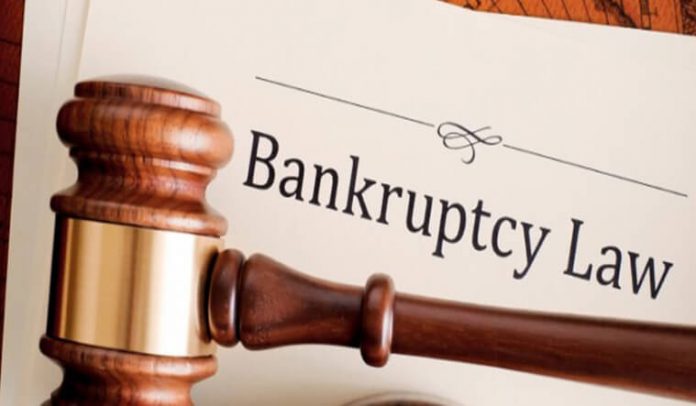This article is written by Ankit Rao pursuing a Certificate Course in Insolvency and Bankruptcy Code from LawSikho.
Table of Contents
Introduction
Section 31 of the Insolvency and Bankruptcy Code, 2016 (hereinafter also referred to as “Code”) stipulates the binding effect of the resolution plan approved by Adjudicating Authority on all relevant entities. Until Insolvency and Bankruptcy Code (Amendment) Act, 2019 was incorporated there was no clear indication of the binding force of such a resolution plan over statutory authorities.
It is well settled that if an amendment is clarificatory or declaratory in nature, it is usually deemed retrospective in nature which is evident from the cases of Zile Singh v. State of Haryana, Shyam Sunder v. Ram Kumar, Commissioner of Income Tax v. Vatika Township Pvt. Ltd, and State Bank of India v. Ramakrishnan and Ors.; the latest amendment to be given retrospective effect is concerning Section 31 of the Code, which the Supreme Court did in the case of Ghanashyam Mishra and Sons Private Ltd. v. Edelweiss Asset Reconstruction Company and Ors. But this is not the first time a provision of the Code has been awarded retrospective effect, previously in B.K. Educational Services Pvt. Ltd. v. Parag Gupta and Associates (hereinafter also referred to as BK Educational Case), it was realized that the amendment of Section 238, which provides for a non-obstante clause, would not serve its actual object unless it is construed as being retrospective.
Furthermore, in the case of SBI v. Ramakrishnan, the Court held that the amendment made to Section 14 of the Code, according to which the moratorium stipulated by Section 14 was held not applicable to guarantors, was stated to be clarificatory and therefore retrospective in nature.
Relevance of the retrospective effect of Section 31
To understand the relevance of the retrospective effect awarded to the provision, what exactly the provision entails needs to be comprehended. Section 31(1) of the Code talks about the binding effect of the resolution plan once the Adjudicating Authority is satisfied that the resolution plan approved by the committee of creditors under clause (4) of Section 30 meets the requirements as referred to in sub-section(2) of Section 30.
The section earlier explicitly talked about its binding effect on the corporate debtor, employers, members, creditors, and other guarantors, but there was no specific mention of governmental authorities. The amendment clarifying the binding nature of the provision concerning governmental authorities was imperative as the absence of such clarification led to undue delay in the disposal of proceedings, defeating the purpose of the Code for which it was enacted. The utility and effectiveness of the Code are contingent upon it being binding on all the relevant entities, including government bodies.
So to ensure that the governmental bodies do not escape the scrutiny of this provision, the legislature amended Section 31(1) of the Code and inserted the words ‘including the Central Government, any State Government or any local authority to whom a debt in respect of the payment of dues arising under any law for the time being in force such as authorities to whom statutory dues are owed.’ The legislature’s intent in amending the said provision is crystal clear by clause (f) of paragraph 3 of the statement of objects and reasons of the Insolvency and Bankruptcy Code (Amendment) Bill, 2019, which is to ensure that the binding nature of the Code prevails over all respective entities including governmental bodies, once the resolution plan obtains the seal of Adjudicating authority.
Even before the amendment was incorporated, many judgments were laid down by the Indian Courts recognizing the binding power of the Code on governmental bodies. Rajasthan High Court in Ultra-Tech Nathdwara Cement Ltd. V. UOI unequivocally observed that the resolution plan, once approved by the Adjudicating Authority, is binding on all stakeholders of the corporate debtor, including statutory creditors.
Significant cases
-
Swiss Ribbons v. Union of India
In the case of Swiss Ribbons v. Union of India, Supreme Court stated that the core objective of the Code is to readapt the corporate debtor monetarily and for that purpose to protect the corporate debtor’s assets from further dilution. But to fully accomplish the said purpose, the creditors must be barred from bringing up belated claims against a successful resolution applicant striving to resurrect the corporate debtor. Because if the government departments are just going to bring up their claims after the company is transferred over to a successful resolution applicant, as the GST department did in Ultra-Tech Nathdwara Cements Ltd. V. UOI and Ors, then intent with which the Code was incorporated will never be achieved. The question that needed to be finally dealt with was that would pending claims from statutory bodies be dealt with in the same manner as that of the normal class of creditors and hence be barred from raising any claim in the aftermath of a successful resolution.
-
Ghanashyam Mishra and Sons Private Ltd. V. Edelweiss Asset Reconstruction Company and Ors
The Supreme Court, in the case of Ghanashyam Mishra and Sons Private Ltd. v. Edelweiss Asset Reconstruction Company and Ors. (hereinafter also referred to as “Ghanashyam case”) finally rendered a judgment touching upon this controversy and stated that once a resolution plan receives the stamp of the Adjudicating Authority, all those claims which did not form part of the resolution plan, stands extinguished and no proceeding could be initiated regarding the collection of such claims.
The Supreme Court in the Ghanashyam case mainly dealt with three questions
- Whether the creditors, including statutory bodies, are bound to the Resolution plan once it receives the approval of the Adjudicating Authority under Section 31(1) of the Insolvency and Bankruptcy Code, 2016?
A bare reading of Section 31(1) of the Code is enough to establish that once the resolution plan receives the assent of Adjudicating Authority, it shall be binding on all the respective entities, including corporate debtor and its employees, members, creditors, guarantors, and other stakeholders. In the BK Educational case, the court held that the term ‘other stakeholders’ would squarely include Central Government, State Government, and other local authorities. Such a provision is imperative for fulfilling the purpose of the Code, which is the revival of the corporate debtor and to ensure its survival on a going concern. The legislative intent by prescribing the provision binding on all the stakeholders is to ensure that no surprise claims should be flung on the successful resolution applicant after the resolution plan.
2. Whether the amendment made to Section 31 by Section 7 of Act 26 of 2019 is clarificatory/declaratory?
The statement of object and reasons of the amendment bill conveys the government’s intent in amending the said provision was to bring statutory bodies under the scrutiny of such binding force. The word ‘other stakeholders’ covers Central Government, State Government, and other local bodies. But because of the omission of straightforward instructions or mandate pointing out the same, certain statutory bodies were not abiding by the mandate of the Code, and to cure this mischief, the 2019 amendment was introduced. In the absence of the retrospective force awarded to the provision, it would be open to the stakeholders to initiate the proceeding of the debt pending before the date of the amendment. The court held that the amendment to Section 31 carries retrospective effect because of its clarificatory and declaratory nature.
3. As to whether, after approval of the resolution plan by the Adjudicating Authority, a creditor including statutory bodies is entitled to initiate any proceedings for recovery of any of the dues from the corporate debtor, which is not a part of the resolution plan approved by the Adjudicating Authority?
The court held that all the dues, including the statutory dues owed to the Central Government, State Government or any local authority, if not part of the resolution plan, shall stand extinguished and no proceedings shall be instituted in respect of such dues for a period before the date on which the Adjudicating Authority grants its approval under Section 31.
While giving the retrospective effect to the provision, the Supreme Court majorly relied upon the matter of UOI and Ors. v. Martin Lottery Agencies Ltd. and B.K. Educational Services Private Ltd. V. Parag Gupta and Associates. Through the former case, it was crystal clear that though the legislative intent in incorporating Section 31 was to extinguish all the debts owed to statutory bodies once the resolution plan received the assent of Adjudicating Authority, however on account of ambiguity, the governmental authorities continued with the proceedings in respect to the debt owed to them.
To cure the said mischief, the legislature decided to clarify its stance and stipulated that once the Adjudicating Authority approved such a resolution plan, all the claims/dues owed to the Central or State Government or any local authority were not part of the resolution plan. The hon’ble court also took into account the statement made by the finance minister while answering the query put up, which elucidated that the government will not make any further claim once the resolution plan is approved. The message conveyed by the finance minister was that the amendment concerning Section 31 of the Code was implemented with the intention of lending assurance to the resolution applicant and other people of interest that the government will accept the resolution plan, which carries the seal of Adjudicating Authority as any action besides this will defeat the purpose of Code. Whereas in the latter case, the question that arose was whether Section 238A of the Code is clarificatory or not and the court, answering in affirmation, stated that Section 238A is retrospective in nature.
Conclusion
It was imperative to give a retrospective effect to the amendment of Section 31(3) of the Code. Otherwise, the creditors would have continued to bypass the clause by incorporating proceedings related to the debt before the amendment. The purpose of the Code is to provide for the implementation of the insolvency resolution process in a time-bound manner to maximize the value of assets to balance the interest of all stakeholders. But because of the absence of such retrospective effect allotted to the provision, it was open to the creditors to cause undue delays by filing litigation proceedings, thereby hampering the value maximization.
Students of Lawsikho courses regularly produce writing assignments and work on practical exercises as a part of their coursework and develop themselves in real-life practical skills.
LawSikho has created a telegram group for exchanging legal knowledge, referrals, and various opportunities. You can click on this link and join:
 Serato DJ Crack 2025Serato DJ PRO Crack
Serato DJ Crack 2025Serato DJ PRO Crack











 Allow notifications
Allow notifications



